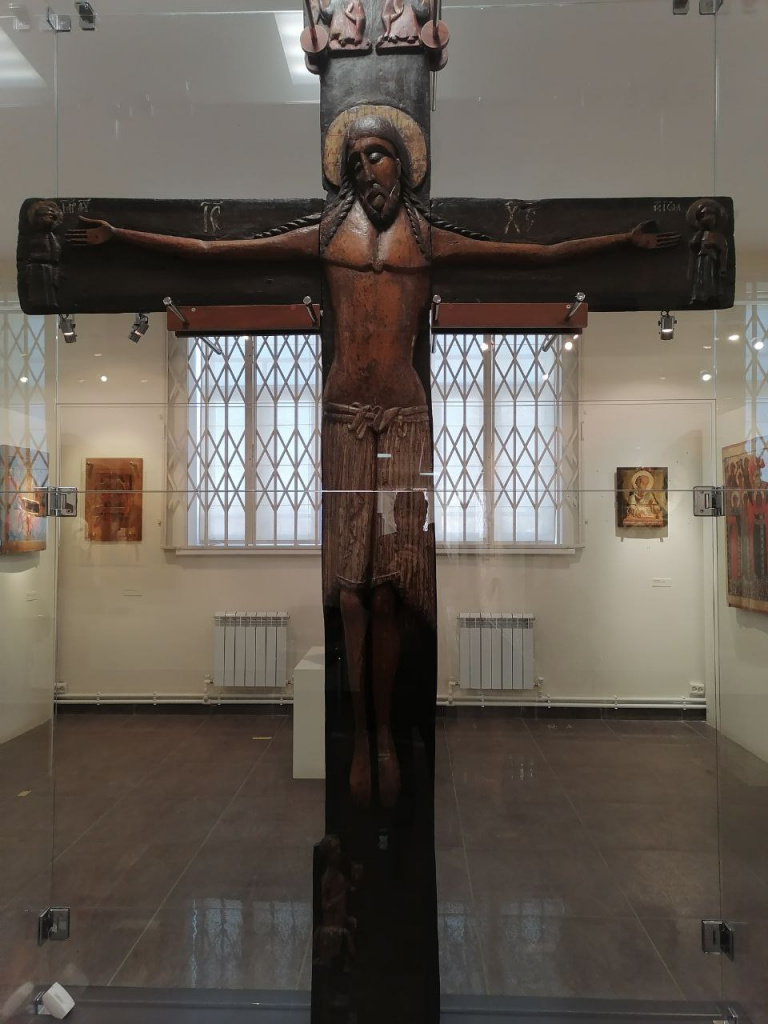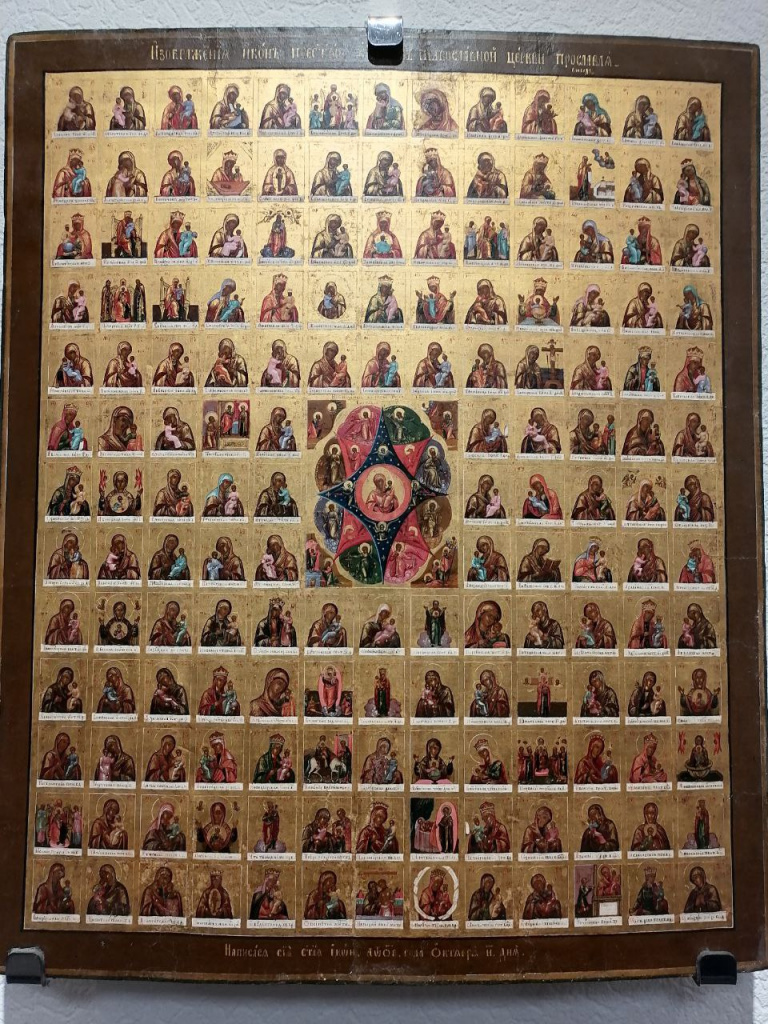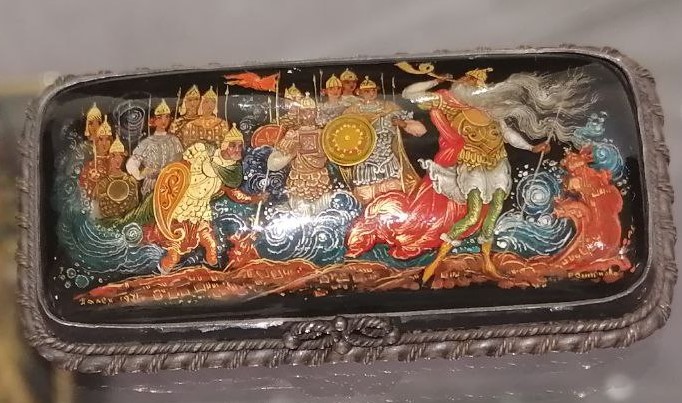Palekh is not even a town but an urban-type settlement located about 30 kilometres from Shuya and 63 kilometres from Ivanovo. Nevertheless, lacquer miniatures created by painters have become widely known not only in Russia but also in many countries of the world. The EcoTourism Expert correspondent speaks on what is definitely worth seeing in Palekh and what, perhaps, is not.
Torists shouldn’t plan a several-day trip to Palekh. The matter is that it is just no hotels to stay overnight in the town as there is only one small guest house and the rooms in it are almost always booked. However, Palekh is only about an hour’s drive from the regional centre, the city of Ivanovo, which allows the tourists to spend a day in Palekh, go sightseeing and return back to Ivanovo even before dark in summer.
Another nuance of a trip to Palekh is that usually a number of house-museums are offered as additional excursions while visiting the State Museum of Palekh Art. They are associated with the painters who made their contribution to the culture of Palekh lacquer miniatures and icon painting. Tickets are inexpensive, for example, a visit to the house-museum of Ivan Golikov, the initiator and founder of the Palekh Craftsman Enterprise of Ancient Painting, costs only 30 roubles, but you need to understand what exactly you want to see and learn.
By and large, an excursion to each such house-museum is more like a glimpse at the everyday life of any painter in the first third of the 20th century. Well, in addition to kitchen utensils or a kerosene lamp, as well as old black-and-white photographs, of course, you can also see items related to Palekh painting, for example, a set of brushes or dried paints. However, for a complete immersion in the atmosphere of those years, it would be better to book a separate tour, which can cost more - about 1,500 roubles on average.
Therefore, it is still worth making the museum the main point of ‘contact’ with the Palekh painting art. And it’s really worth it!
The exposition includes several sections. To adapt the visitors to the creative atmosphere, they are taken at first to the museum room where modern exhibits are on the walls showing paintings and miniatures created by art schools in a famous Palekh style with pictures in primary colours - red, yellow and green - painted on a black background.
And after that, there come the pieces created in the world-famous Palekh art style!

First of all, this is a very rich collection of icons as icon painting has been practiced in the village since the 17th century. In addition to icons, the painters of Palekh painted and restored frescoes in the cathedrals of the city of Vladimir and even in the Moscow Kremlin. To be honest, I was surprised to see that the museum collection has several statuettes, for example, of Jesus Christ crucified, which is very unusual for the Orthodox tradition where images of saints in the form of statues are not canonical at all. Several oldest icons in the exposition date back to the 14th century, but you will remember best of all the icon depicting all the images of the Blessed Virgin, we had not come across such an icon anywhere before!

Moving through the museum rooms, a traveller finally comes to the realm of lacquer miniatures. And here, I would like to note that you need to have not only sharp eyesight, but also a smartphone with a good camera - the paintings of some miniatures can be seen only if you point the camera at the painting and zoom it in on the screen. By the way, special magnifiers for a more thorough study of Palekh little boxes could also be provided directly against some gage at the box-office when buying tickets.
For those who can see all the details and want to learn more about a particular piece, a keeper in each museum room helps willingly. From them, for example, you can learn that it took the painter two years to create The Lay of Igor’s Campaign, and graduates of art schools are normally given three months to make their graduation project.
By the way, the creation of numerous miniatures is partly due to the fact that the work of Palekh masters took a very long time. The gallery invigilators say that the painters needed money for living while their work on a large casket had not yet been completed, so they created small miniatures, sold them and earned their living. Well, the second explanation was that miniature pieces that appeared during the creation of something large works were needed so that the painters did not lose touch with reality.

In the opinion of an inexperienced tourist, there is even more in miniatures. However, there are also interesting nuances in the exposition, for example, in the miniature ‘33 Heroes’. Your humble narrator specially enlarged the image on the box, counted all the heroes and found out that there were 13 of them only and the ‘Uncle Chernomor’. When I asked where the other two dozen heroes were, the museum room keeper answered smiling, “They are hiding behind the backs of those who stand in the front row.”
Visitors can purchase the Palekh miniatures at the museum’s salon-store. But you should know that the price for even a small box here is very high. If you do not want those boxes intended for a pair of earrings, the prices start from 6-8 thousand roubles and are much higher; for example, a casket worth 198 thousand roubles is sold in the salon. However, inexpensive souvenirs, for example, toy or fridge magnets with a printed picture can be bought for 150-200 roubles only. And those magnets with real handmade Palekh paintings cost 1,500-2,000 roubles.
In winter, of course, especially during the Christmas season, which was very severe and frosty in the Central zone last year, it is not easy to walk around the town of Palekh. However, if the weather permits, there is also something to see around the museum within a walking distance. For example, the tourists can visit the 18th-century Church of the Exaltation of the Holy Cross with the ancient icons and a marvelous amazing icon screen preserved.
For those who want to make Palekh art pieces by themselves, there is an art workshop ‘Palekh Style’. Here they can take part in a workshop session and they or their children can create a real miracle with their own hands, applying varnish to wooden or plastic things.
By the way, according to statistics, every eighth resident of the town of Palekh is a painter. So, you could be sure that while walking around the town all day, you can come across the largest number of painters in your life.


